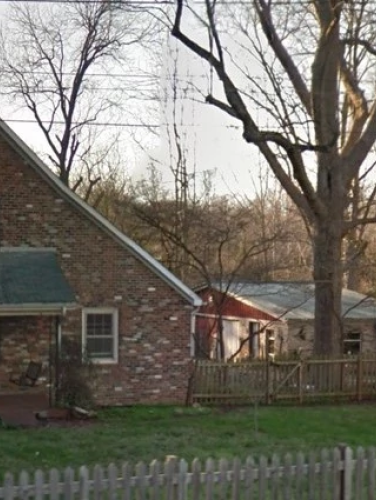
Stafford-Holcombe Farm
(ca. early 1800s)
The Stafford-Holcombe Farm was once part of the 2,300-acre landholdings of Irish immigrant James Stafford.
12215 Plaza Rd Extension, Charlotte, NC 28215
James Stafford (1730-1812), a native of Northern Ireland, amassed extensive landholdings in eastern Mecklenburg County during the late eighteenth century, totaling more than 2,300 acres. He established a prosperous agricultural operation and served as Mecklenburg County’s constable from 1775 until 1785. The extant farmhouse – a two-story, timber frame house originally sheathed with beaded clapboards – was likely erected in the early nineteenth century to replace an earlier family dwelling on the Stafford property. The finely crafted residence suggests the family’s wealth and prominent social status.
Property Quick Links
James and his wife married Mary Polly Eldridge Stafford raised three children: George (1769-1824), James Jr. (b. circa 1770), and Jane (d. 1804). George married Tirza Alexander (1774-1825) in 1793 and had seven children between 1798 and 1821. George’s family lived on a farm near Salisbury, where he was aided by the enslaved labor of five people. James Jr., his wife Mary McKee, and their four children (born between 1783 and 1800) were neighbors of James Sr. and Mary. Daughter Jane married Samuel McKee in 1792, and the couple lived in the vicinity of York, South Carolina. Upon James Sr.’s 1812 death, James Jr. inherited the tract of land upon which his family resided upon and an additional fifty acres. George received the rest of his father’s real property (including the farmhouse and outbuildings) and all his personal property, while Jane was bequeathed an enslaved girl named Kate.
Following George’s death in 1824, his eldest son Franklin (1798-1871) and his family resided in the house erected for his grandparents for much of the nineteenth century. Franklin’s first wife Cynthia Moore (1801-1825) died one year after their marriage and within weeks of the birth of the couple’s first child. Franklin remarried in 1829, and he and wife Mary Pharr (1808-1835) had three children, all of whom died young. By 1840, Franklin’s household consisted of his two daughters Cynthia (1825-1881) and Mary (1835-1846) and five enslaved persons, including a boy and girl under age ten. Prior to the abolition of slavery, Franklin increased his enslaved labor force to at least ten persons. Franklin married one final time in 1855, wedding Mary Caldwell of Cabarrus County.
In 1860, Franklin owned 275 acres of land from which he harvested 300 bushels of wheat, 600 bushels of corn, twenty-five bushels each of sweet and Irish potatoes, fifteen tons of hay, ten 400-pound bales of cotton, and forty pounds of wool, while raising a variety of livestock. After the Civil War, Franklin continued farming the property – relying on the help of tenant farmers, including some of his former slaves – until his death in 1871. The property remained in the Stafford family until 1925. It was ultimately acquired by Commodore Perry Holcombe (1891-1973), a locomotive fireman from Greenville, South Carolina. After moving into the house in 1940, the Holcombe family cultivated the property with the help of tenant farmers well into the latter half of the twentieth century. The property contains several outbuildings, some dating back to the early 1800s.

